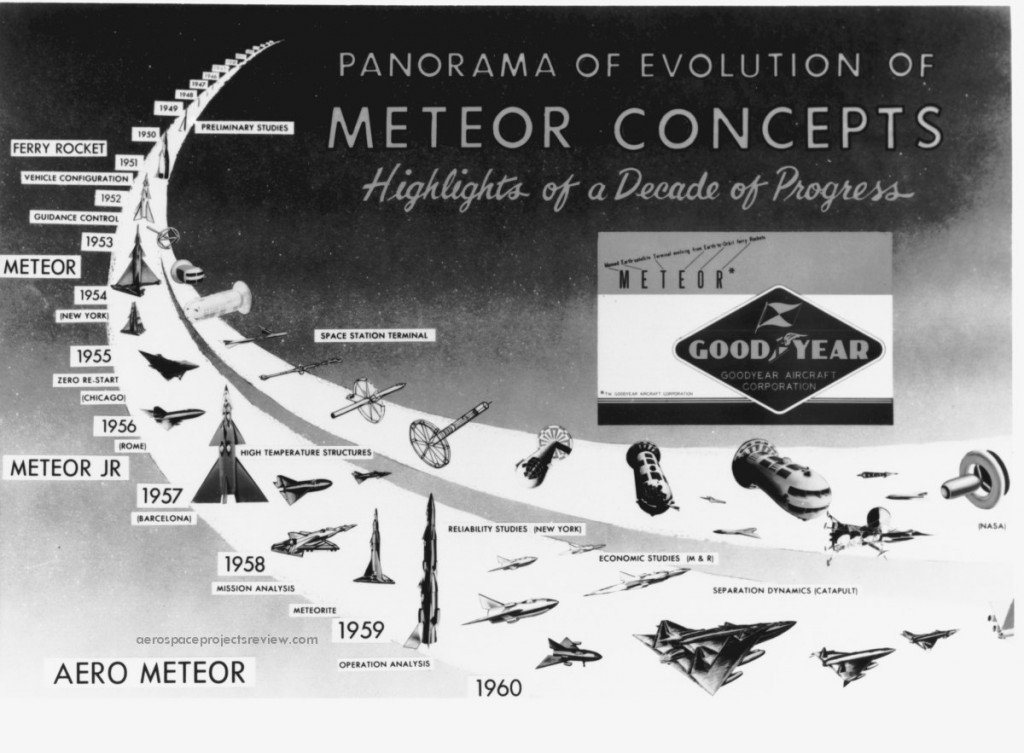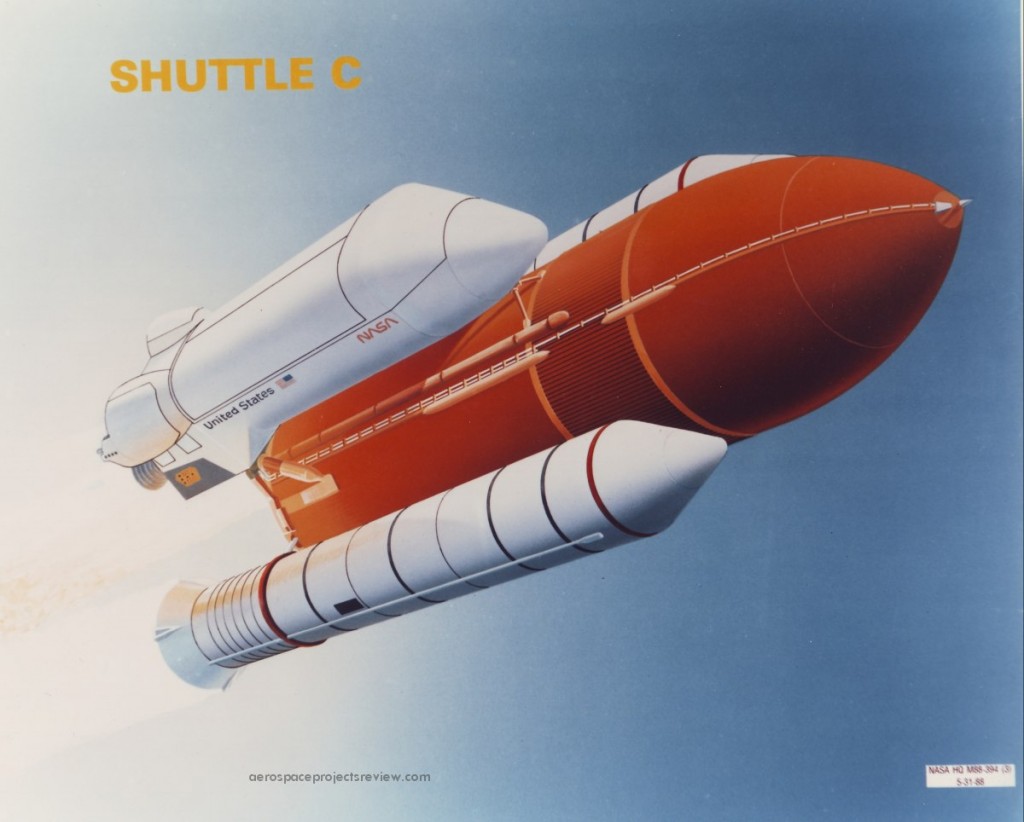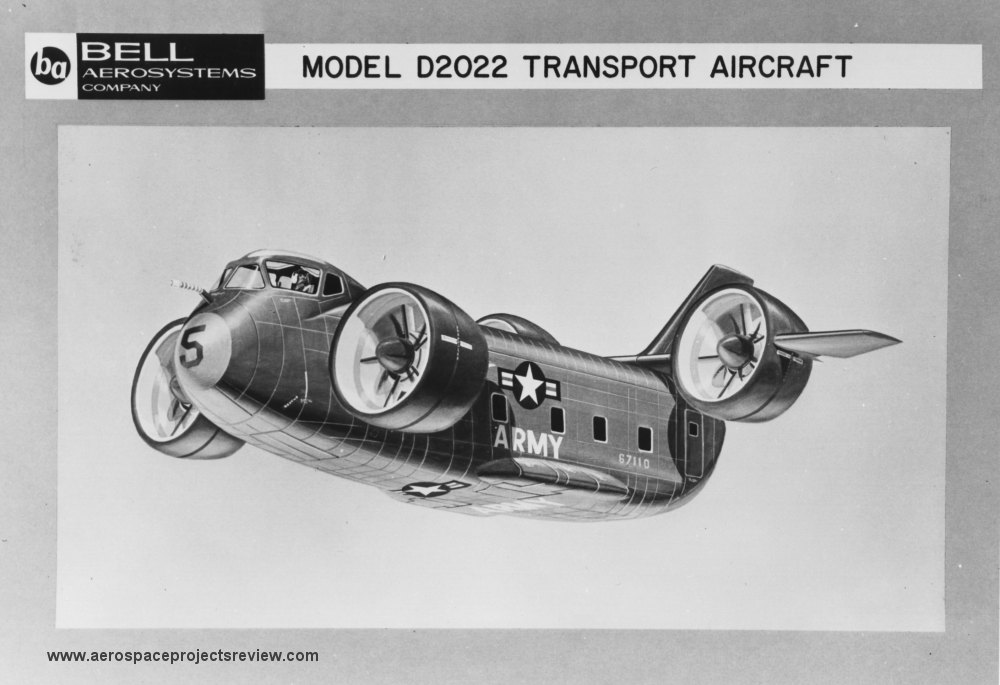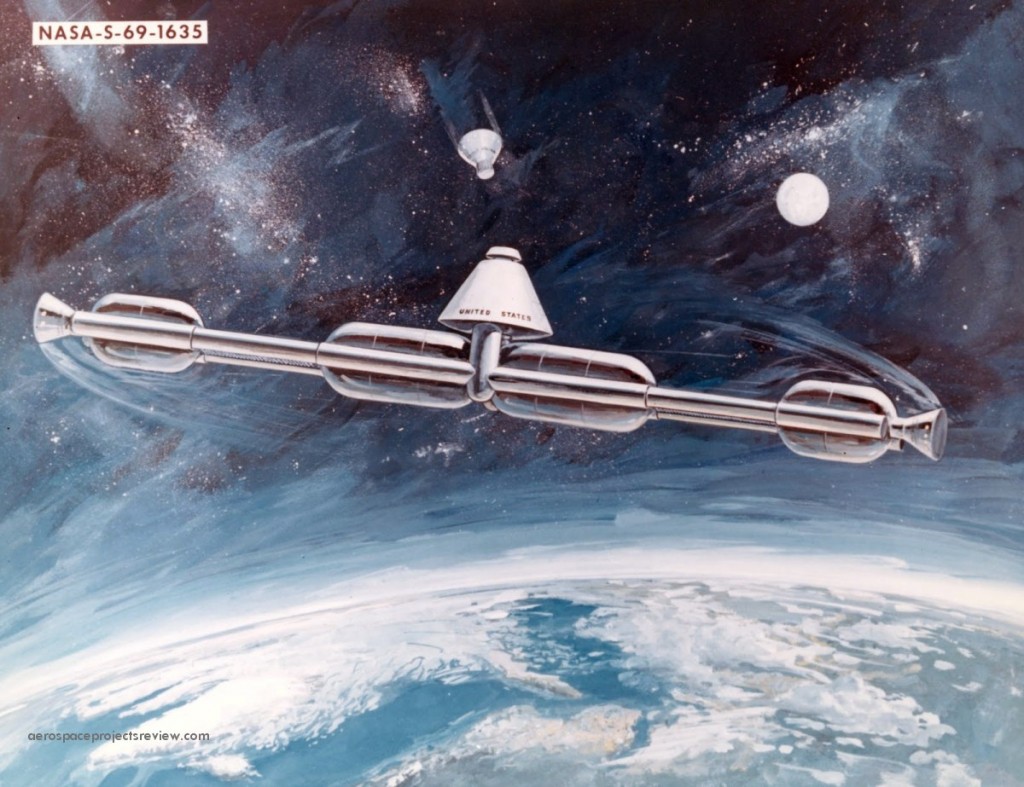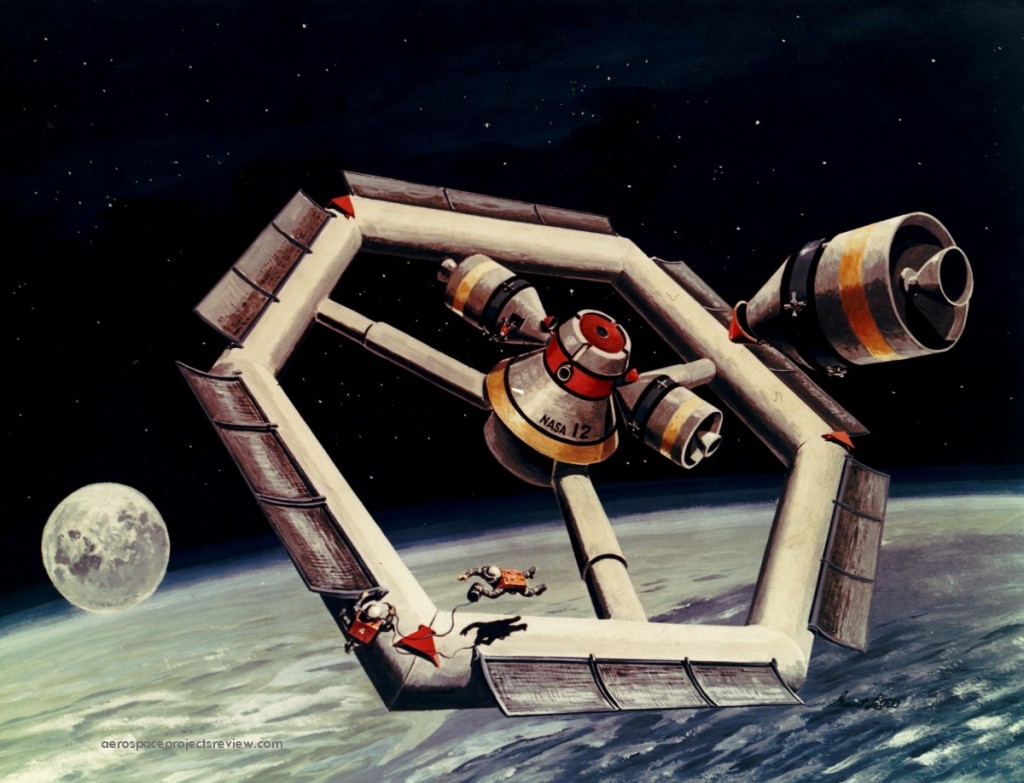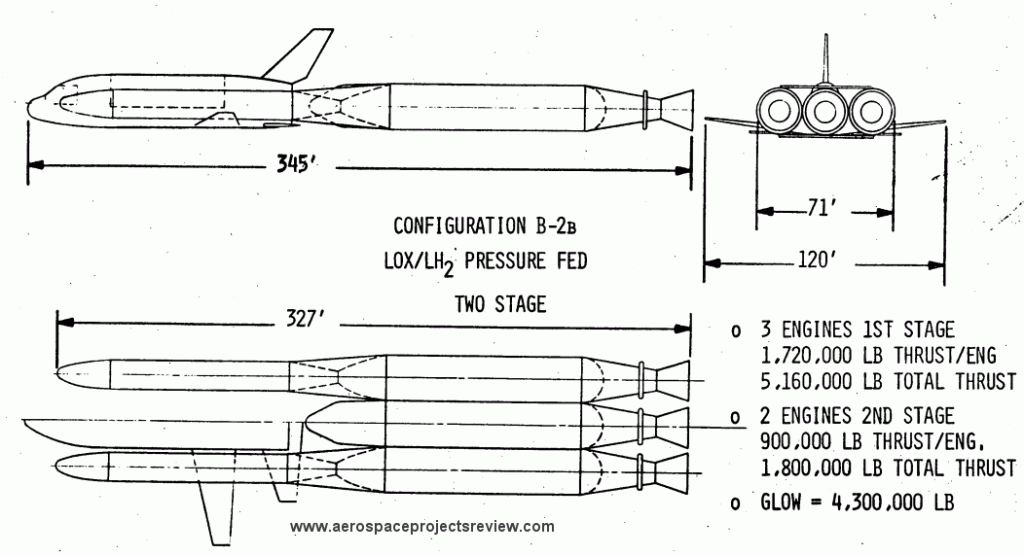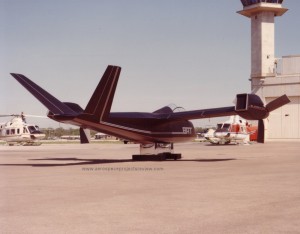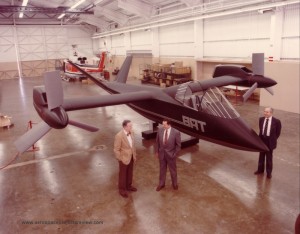An illustration from Goodyear, circa 1960, showing the evolution of the “METEOR” launch vehicle and space station systems. Note that it goes back to at least 1949, and perhaps earlier. See also Space Doc 55.
A NASA illustration from 1988 depicting a Shuttle C launch vehicle in flight.
A 1959 Bell Aerospace design for a Tri Service (Army, Marines, USAF) VTOL troop transport using vectorable ducted fans. This obviously led to the X-22 design. The fuselage was much like that of transport helicopters like the Chinook, boxy and unaerodynamic, but the propulsion system would provide considerably higher forward velocity.
A chart of Bell VTOL designs is HERE.
A Grumman alternate Space Shuttle concept with a low cross range orbiter and a trio of 156-inch diameter solid propellant rockets for the first and second stages. The orbiter itself was stuffed with liquid hydrogen and liquid oxygen tanks; even so, the high density of the solid rockets meant that the vehicle as a whole was remarkably compact.
This 1969-era NASA painting depicts a space station that does not seem to make much sense. For starters: it would seem to be a single-launch station, but how would it fold up for launch? If the two arms were to fold “down,” the large pressure vessels would try to pass through each other. And it has what appear to be Apollo capsules at the ends of the arms. If this is so, it would not only mean that separating one capsule would throw the space station far off balance, it also means that an incoming capsule would be incapable of docking unless the station stopped rotating.
NASA artwork from 1962 depicting a single-launch space station. Launched by a Saturn V, this space station would be folded up, then would unfold once on orbit to form something of a torus. Rotation would then supply a measure of artificial gravity. With a design like this, much of the inner volume would not be very efficiently used… as the straight cylindrical segments diverge further from a circular centerline for a hypothetical truly circular torus, the more the inner surface of the segment would seem to slope “uphill.” Thus the interior would probably be stepped so that the floor would be “flat” from the acceleration vector point of view, to keep everything from rolling or sliding “downhill.” In this case the central hub appears to be rotationally decoupled.
Image is related to this radial-arm concept, and was scanned at the NASA HQ history archive.
A photo of the Bell Helicopter BAT (Bell Advanced Tiltrotor) mockup built in the late 1980s. This was an early competitor in the Light Helicopter eXperimental (LHX) program, eventually won by what would become the RAH-66 Comanche. While the BAT met the early requirements of the program, it was too unconventional.
